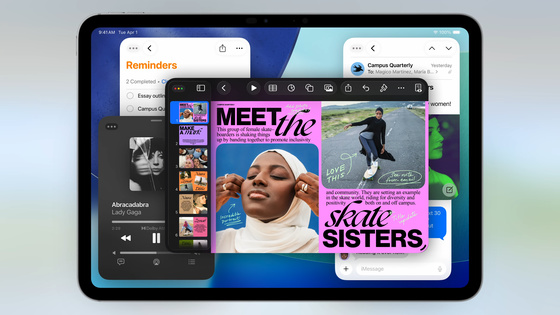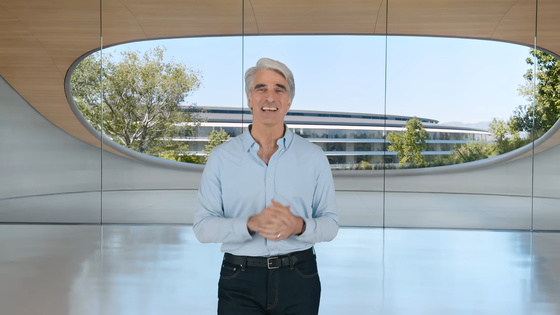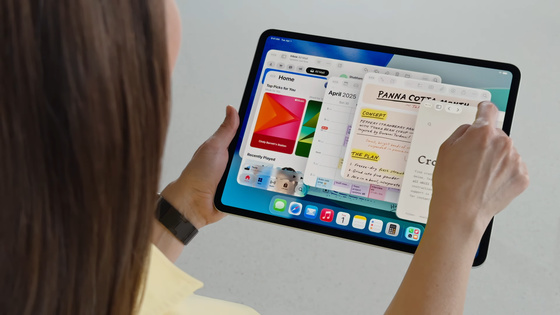In an interview, Apple's Craig Federighi explains why macOS shouldn't be on the iPad

iPadOS 26 , announced at WWDC25 in June 2025, has become a hot topic because it is more like macOS, with multitasking allowing apps to be displayed in windows, the mouse pointer becoming an arrow, and a menu bar being displayed at the top. In response to the voices saying, 'If that's the case, we should just put macOS on the iPad from the beginning,' Craig Federighi, Apple's senior vice president of software engineering, responded to an interview with MacStories, an Apple-related news site.
Interview: Craig Federighi Opens Up About iPadOS, Its Multitasking Journey, and the iPad's Essence - MacStories
https://www.macstories.net/stories/interview-craig-federighi-opens-up-about-ipados-its-multitasking-journey-and-the-ipads-essence/
Federighi has consistently argued that the idea of 'installing macOS on the iPad' is a 'bad idea' that undermines the unique strengths and essence of each product. 'Suppose someone said, 'Spoons are great, forks are great, so let's combine them into one tableware as a 'Spork.' But we know that a spork is neither a good spoon nor a good fork. That's a bad idea. That's why we don't want to make a spork,' he continued, making it clear that he doesn't want to make a half-baked product.
Federighi further explained that his philosophy is one of mutual inspiration, not integration: 'I don't think the iPad should run macOS, but I think the iPad can be inspired by elements of the Mac, and the Mac can be inspired by elements of the iPad. And that's actually happened many times,' he added, emphasizing the history of the two platforms enhancing each other.

Regarding this idea that 'each has its own role,' Federighi cites the metaphor of 'cars and trucks' once used by Steve Jobs. 'For many people, the iPad is a great daily driver,' he says. 'But you don't need to strap a winch to the front of that car or put a hitch or a carrier on the back to tow a boat. That's a role for the more specialized and powerful truck, the Mac.'
Federighi also points out that, 'If a user says, 'I love this thing and I drive it, can I haul my boat or haul my lumber?' But if you try to force a truck onto an iPad, which is a car, you end up losing the essence of the product.'

And with regard to the idea of consistency across platforms, Federighi said, 'Absolute consistency would mean not optimizing for anything,' denying the imposition of a single experience. He emphasized that Apple's policy is to 'seek consistency where it makes sense, but to tailor these experiences to each device.'
Behind this decision lies a history of carefully nurturing the iPad's unique app ecosystem. When asked what would have happened if the iPad had had a Mac-like menu bar from the beginning, Federighi replied that the nature of iPad apps would have been fundamentally different, saying, 'The UI design acts as a 'constraint' that directs the developer's creativity. The clues in the UI are constraints on the developer's operation and determine to some extent the nature of what is created.'

'The iPad created an environment that had simplicity at its core, and that led to so many developers doing all kinds of incredible design work to keep that experience simple,' Federighi said, explaining that these deliberate constraints ultimately fostered a unique and rich touch-centric app culture.
Finally, Federighi reflected, 'We've been on a journey together with our users to find the right interface for iPad, and I think it's really important that it's been a well-thought-out journey.'
in Software, Posted by log1i_yk